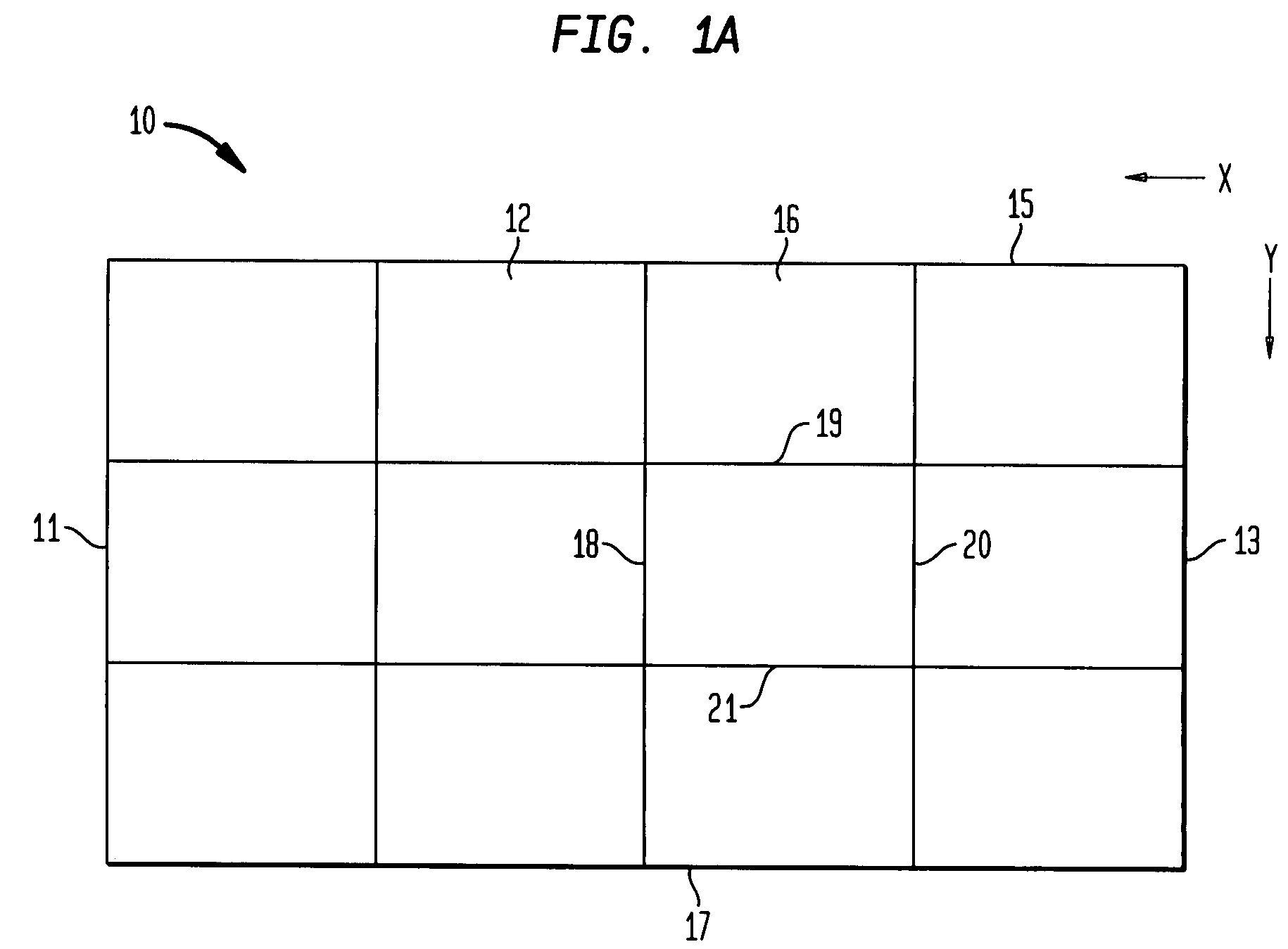Edge connect wafer level stacking
a technology of edge connect and stacking, which is applied in the direction of electrical equipment, semiconductor devices, semiconductor/solid-state device details, etc., can solve the problems of substrate cracking during the notching process, and achieve the effects of reducing cost, reducing weight, and reducing siz
- Summary
- Abstract
- Description
- Claims
- Application Information
AI Technical Summary
Benefits of technology
Problems solved by technology
Method used
Image
Examples
Embodiment Construction
[0082]Reference is now made to FIGS. 1-4B, which illustrate a method and apparatus for stacking microelectronic components. As shown in FIGS. 1A-1B, a portion of a first wafer or subassembly 10 includes a plurality of microelectronic elements 12, each positioned side by side and adjacent to one another. The first wafer or subassembly 10 preferably includes numerous rows of microelectronic elements 12 aligned along an X-axis and a Y-axis. The microelectronic elements are formed integral with one another using conventional semiconductor process techniques. It should be apparent that the subassembly 10 may be a portion of a wafer. And the broken lines in the FIG. 1A illustrate that the subassembly may have additional elements attached thereto and may be in the shape of a circular wafer.
[0083]Each microelectronic element 12 includes a front face 14 and an oppositely-facing rear face 16. The microelectronic elements 12 also include first edges 18, second edges 20, third edges 19 and four...
PUM
 Login to View More
Login to View More Abstract
Description
Claims
Application Information
 Login to View More
Login to View More - R&D
- Intellectual Property
- Life Sciences
- Materials
- Tech Scout
- Unparalleled Data Quality
- Higher Quality Content
- 60% Fewer Hallucinations
Browse by: Latest US Patents, China's latest patents, Technical Efficacy Thesaurus, Application Domain, Technology Topic, Popular Technical Reports.
© 2025 PatSnap. All rights reserved.Legal|Privacy policy|Modern Slavery Act Transparency Statement|Sitemap|About US| Contact US: help@patsnap.com



